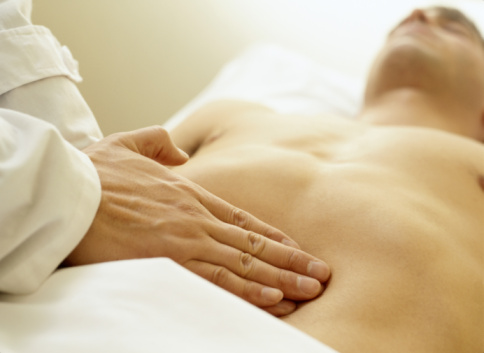Urodynamics
Urodynamics is a group of tests that allow your healthcare provider to look at how your lower urinary tract works. Your lower urinary tract includes the bladder (which stores urine) and the urethra (which is the tube that carries urine from your bladder to the outside). This is the only form of testing we have to look at the function of the lower urinary tract.

How does the lower urinary tract work?
The bladder's responsibility is to store and empty your urine. The bladder is made up of muscle that should work to store and empty urine in a way that keeps urine from backing up into the kidneys. As the kidneys fill the bladder, the urine is stored there. The bladder muscle (called the detrusor muscle) should stretch easily to allow the bladder to fill. The sphincter muscles at the bottom of the bladder should be tight and not let the urine leak out. Urine can leak out for several reasons. Sometimes it is because the sphincter muscles are weak or because the bladder muscle is overactive.
When the bladder is full, a message is sent to the brain that it is time for you to empty your bladder. Your bladder muscle then squeezes while the sphincter muscles and pelvic floor muscles relax and let the urine out.
Sometimes a blockage in the urethra can cause the urine flow to be weak. Different things, such as an enlarged prostate or a bladder that has dropped in women, can cause this.
After your bladder empties, your sphincter muscles tighten up again so that the urine stays in the bladder.
Why would I need Urodynamics?
After your healthcare provider has spent some time going over your symptoms and complaints, performed a physical exam and possibly done some simple urine tests, he or she may feel the puzzle isn?t complete and may order Urodynamics. Urodynamics helps identify specific problems related to:
- Controlling your urine
- Not emptying your bladder completely
- Feeling of frequent and/or urgent need to urinate
- Weak or intermittent (stopping and starting) urine flow
- Frequent urinary tract infections

What is Urodynamics?
There are several pieces that make up Urodynamics. Patients should come for the test with a full bladder (if possible). You will be asked to urinate into a special commode chair or funnel. This will measure how much urine comes out and how fast it comes out. The test is called a Uroflow.
Next, a catheter (a small soft tube) will be placed into your bladder to drain out all the leftover urine. This will show how well your bladder emptied. Through a catheter, your bladder will be filled and the pressure of your bladder muscle and its response to being filled will be measured.
When you feel your bladder is full, you will be asked to empty your bladder into the special commode again. This time you will urinate with the tubes in place. The tubes are specially designed to let the fluid come out around them. This lets us look at the function of your bladder as it empties. This is called a Voiding Pressure Study or a Pressure Flow Study.There are several pieces that make up Urodynamics. Patients should come for the test with a full bladder (if possible). You will be asked to urinate into a special commode chair or funnel. This will measure how much urine comes out and how fast it comes out. The test is called a Uroflow.
Next, a catheter (a small soft tube) will be placed into your bladder to drain out all the leftover urine. This will show how well your bladder emptied. Through a catheter, your bladder will be filled and the pressure of your bladder muscle and its response to being filled will be measured. At the same time, an estimate of the pressures outside the bladder will be measured by inserting another small soft tube, or catheter, into the rectum or the vagina. This tube is about the size of a spaghetti noodle and doesn?t do anything except measure pressure. The measurement of these pressures during filling is called a Cystometrogram (or CMG).
As the bladder fills, the different pressure measurements will be recorded and you will be asked questions about the way your bladder feels as it is filling. Your bladder will be filled with either a sterile water type fluid or a fluid that can be seen on x-ray. Filling your bladder should not hurt. You may also be asked to cough and push or bear down to check for any leakage.
Small sticky patches are often placed on either side of the bottom to measure the electrical activity of certain muscles. This is called an Electromyogram (or EMG).
Other things that might happen during Urodynamics include:
- X-ray pictures may be taken with any or all parts of these tests.
- The catheter might be moved back and forth in the urethra or urine channel to get more information about the outlet. This is called a Urethral Pressure Profile (or UPP)
- Before and/or after your test you may receive an antibiotic as a precaution to prevent infection.
In closing
After your Urodynamics are completed, your healthcare provider will review all the information and discuss the results with you. Then you and your healthcare provider will decide on the best plan of treatment for you.
Content provided courtesy & permission of the American
Urological Association Foundation, and is current as of 5/2010.
Visit us at www.urologyhealth.org for additional information.
